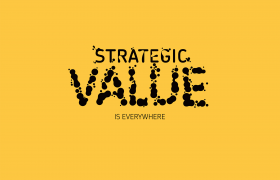Strategic Value
What does the designer want? Inner conversations of a ‘maker’ soul discovering its strategic powers.
What is it about design and its practitioners that is so valuable for strategic innovation? We set out to answer this question and who better to help us than CRISP members? We talked with design professionals, but we also wanted to hear from the project leaders and company managers who worked with the designers. How did they experience the strategic value of designers during CRISP?
Several interviewees pointed out that the reason innovating companies like to work with designers is due to their ability to envision the future. When business practitioners pursue innovation, they tend to get caught in short-term approaches that don’t work well for PSS development. Creating successful PSSs like the iPhone or Nespresso requires an unwavering long-term vision. Designers can apply their creativity and trained intuition to shape a vision of the future that fits the company’s strategy and assets. At the same time, they can use their visualisation skills to translate a vision into tangible artefacts, such as PSS touch points or prototypes.
read more
What does the designer want? Inner conversations of a ‘maker’ soul discovering its strategic powers.
What is it about design and its practitioners that is so valuable for strategic innovation? We set out to answer this question and who better to help us than CRISP members? We talked with design professionals, but we also wanted to hear from the project leaders and company managers who worked with the designers. How did they experience the strategic value of designers during CRISP?
Several interviewees pointed out that the reason innovating companies like to work with designers is due to their ability to envision the future. When business practitioners pursue innovation, they tend to get caught in short-term approaches that don’t work well for PSS development. Creating successful PSSs like the iPhone or Nespresso requires an unwavering long-term vision. Designers can apply their creativity and trained intuition to shape a vision of the future that fits the company’s strategy and assets. At the same time, they can use their visualisation skills to translate a vision into tangible artefacts, such as PSS touch points or prototypes.
read more
About Themes
Wondering about the results of CRISP? Longing to dive into the outcomes of the eight projects? Watch this! We have taken CRISP to a higher level and discovered four overarching themes: designing rela- tionships, orchestration, embracing complexity, and strategic value. Call it serendipity if you want; in our view, these are the future themes
of PSS research!
In the past four years, the Creative Industry Scientific Programme
has explored how we can create knowledge that will help creativity assume a more strategic role in ser- vice innovation for society and the economy. We started the eight pro- jects to stimulate synergy between the two traditional paradigms of product design and service design. But in designing and research-
ing PSS, we found ourselves on completely new ground. About a year ago, we began to ask ourselves, “Can we capture this? Can we find deeper themes that transcend these projects?” To answer these higher level questions, we organised creative sessions where we zoomed out in search of the most relevant, overarching CRISP lessons on
PSS design.
These four overarching themes offer up fresh perspectives on
PSS design. Enjoy reading CRISP’s epilogue.
Wondering about the results of CRISP? Longing to dive into the outcomes of the eight projects? Watch this! We have taken CRISP to a higher level and discovered four overarching themes: designing rela- tionships, orchestration, embracing complexity, and strategic value. Call it serendipity if you want; in our view, these are the future themes
of PSS research!
In the past four years, the Creative Industry Scientific Programme
has explored how we can create knowledge that will help creativity assume a more strategic role in ser- vice innovation for society and the economy. We started the eight pro- jects to stimulate synergy between the two traditional paradigms of product design and service design. But in designing and research-
ing PSS, we found ourselves on completely new ground. About a year ago, we began to ask ourselves, “Can we capture this? Can we find deeper themes that transcend these projects?” To answer these higher level questions, we organised creative sessions where we zoomed out in search of the most relevant, overarching CRISP lessons on
PSS design.
These four overarching themes offer up fresh perspectives on
PSS design. Enjoy reading CRISP’s epilogue.
As we dived under the surface, we discovered four intriguing common themes and took the opportunity
to dive even deeper. When CRISP started, the word relationships didn’t seem to be relevant. However, after four years, it became clear that, across the eight projects, a PSS is all about maintaining a relationship between the user/consumer and the provider. When we defined designing relationships as a theme, it felt like we had hit a research goldmine.
We all recognise the problem of multi-ownership in PSSs. They are networks! Gradually, it became clear that the system only works well when every player in the system reads the same score. Orchestration is the term that emerged from our discussions and this became the second of our four themes.
We noticed that the extreme com- plexity was an important factor determining how PSS design works. Trying to overcome complexity through forced attempts to simplify things, for instance, led to frus- tration. The only way forward is to acknowledge and accept the intri- guing dynamics of PSSs. This led to the theme of embracing complexity.
Initially, we thought that ‘strategy’ and ‘value’ in all their aspects were the sole domain of the CASD pro- ject; the acronym stands for Com- petitive Advantage through Strategic Design. That proved not to be the case. In other projects insights also emerged that contributed to this field. Strategic value is the fourth
of our broad themes and is part and parcel of all CRISP projects.

